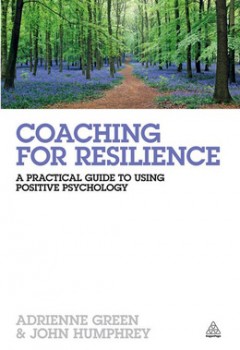
![]() Photo Credit: NASA’s Marshall Space Flight Center via Compfight
Photo Credit: NASA’s Marshall Space Flight Center via Compfight
Millions of people were hit hard by Hurricane Sandy and many are still reeling from the loss. Being a student and practitioner of positive psychology, in times of great trauma and loss, I can’t help but think about what the science has to offer to people experiencing adversity (see also “When Disaster Strikes” and “Lessons from Japan.”)
People may not think to turn to positive psychology in times of crisis. Sometimes people mistakenly believe positive psychology is only the study of superficial happiness and optimism, both of which can be difficult to hold on to in the midst of great tragedy.
 A new book, Coaching for Resilience: A Practical Guide to Using Positive Psychology by Adrienne Green and John Humphrey, explains that resilience is not about being happy, positive and optimistic in the face of adversity. The authors recognize that we are “moved emotionally” by life’s challenges, i.e. we “feel pain, anxiety, fear, sadness, even despair.” But resilience is our ability to bounce back from these difficulties, and recover to our original state.
A new book, Coaching for Resilience: A Practical Guide to Using Positive Psychology by Adrienne Green and John Humphrey, explains that resilience is not about being happy, positive and optimistic in the face of adversity. The authors recognize that we are “moved emotionally” by life’s challenges, i.e. we “feel pain, anxiety, fear, sadness, even despair.” But resilience is our ability to bounce back from these difficulties, and recover to our original state.
The Coaching for Resilience guide is filled with exercises and practical strategies for incorporating positive psychology into life. But because I was still reeling from the aftershocks of Hurricane Sandy as I read it, a few key strategies that seem appropriate for times of great tragedy jumped out at me:
- Accept that “change is the only constant.” Change threatens our need to feel in control. But change is also a fact of life. We need to be open to change and respond flexibly when curves come our way.
- “Look for the good news.” It is our natural instinct to look for the threat in any change. But we should also pay attention to the good that comes from change. This may be hard to consider when people have lost so much in the storm, but most people I know are also finding good—a fresh start, the kindness of strangers, support from their community, reminders of what is most important, etc.
- Don’t ignore the challenges. The point is not to ignore the negative aspects of change, as those often highlight areas where action needs to be taken and they may bring important learning lessons as well. Just don’t let them consume you so that you fail to recognize any good news that might be present.
- Make a plan. Rather than dwelling on what has happened, outline steps to move forward. Engage your support network in the plan and celebrate achievements as you go along. The authors remind us here that “change is the only constant” so be prepared for setbacks along the way and make adjustments as needed.
- Learn from your life experience. Think of another time in your life when you confronted a difficult situation. How did you handle it? The guide walks people through a detailed exercise to help people learn from their past successes in confronting challenges.
- “Nothing in life stays the same forever.” This is yet another way of saying that “change is the only constant” (seeing a theme here?) But this is a reminder that even when things are bad, they may not be permanently bad.
- “Become a scientist.” Don’t just accept every thought that goes through your head. Instead, look for supporting evidence before deciding how much weight to give to your inner voice.
- “Interrupt yourself.” In times of disaster, it’s easy to become consumed with either ruminating about the past or worrying about the future. Consciously interrupt these thought streams from time to time to spend some time in the present. Ask yourself, “What am I doing?”, “What am I thinking?” and “How do I feel.” A moment of mindfulness is calming, and a mindfulness practice will develop your ability to focus your own mind, a skill that can be useful when recovering from a setback.
I should note that the Coaching for Resilience guide is not about recovering from disasters. It’s about being resilient to all of the ups and down that life sends our way. But it’s nice to know that positive psychology is not only a science for happy times. There is much here that we can turn to in those times when we need it the most.
—
References and recommended reading:
Green, A. & Humphrey, J. (2012). Coaching for Resilience: A Practical Guide to Using Positive Psychology. Kogan Page.

Comments are closed.